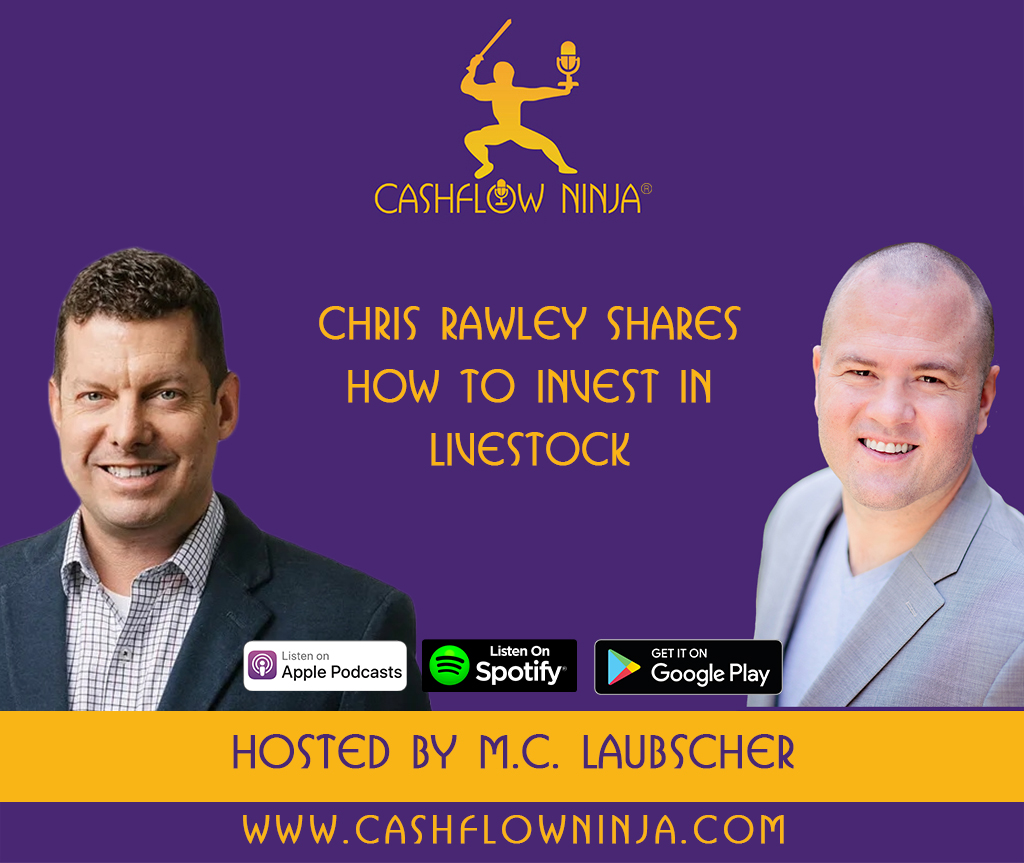
Livestock investments refer to putting money into animals raised for various purposes like meat, dairy, wool, and other products. This type of investment brings unique opportunities and risks compared to traditional assets.
Why Invest in Livestock?
Have you ever considered how investing in livestock could transform your financial portfolio? It’s not just about the cows and chickens; this is an investment strategy with depth and breadth beyond traditional asset classes.
A hedge against market downturns. That’s what livestock investments can offer. They provide a layer of diversification that helps to steady your portfolio.
There is massive global demand. With the world’s population rising and a ballooning middle class in developing nations, there’s a surging demand for protein-rich foods. What does this mean for you as an investor? As the craving for meat and animal products intensifies, prices could increase, potentially boosting the returns on livestock investments.
Livestock is a tangible asset, similar to real estate or precious metals. Something is reassuring about being able to see and touch your investments.
Did you know that agricultural commodities, including livestock, have served as a buffer against inflation throughout history? That’s right; your livestock investments could help protect your wealth during inflationary periods.
The livestock sector faces challenges like disease outbreaks and resource limitations. But while these hurdles can limit livestock supply, they could also drive up their market value due to scarcity, presenting another potential win for investors.
Many emerging markets boast booming meat and dairy industries. By investing in these burgeoning markets, you could tap into their rapid growth trajectory.
And we’re living in an era of technological innovation. From advancements in livestock management to breakthroughs in genetics and health, modern technology has flung open the doors to exciting investment opportunities in the livestock sector.
Livestock Ecosystem
The livestock investment sector is a fascinating landscape. It’s a vast and intricate arena, humming with various animals, diverse production techniques, and regions. This sector, an enduring cornerstone of agriculture, is a dynamic entity that constantly evolves as new trends surface and technology advances.
Consider the array of livestock types involved. Cattle, the wellspring of our beef and dairy products, and poultry – encompassing not just chickens but also turkeys and ducks. Pigs were primarily raised for pork, and sheep were prized for lamb, mutton, and wool. Goats offer meat, milk, and cheese, and aquaculture is the realm of fish and shellfish farming.
It’s a complex ecosystem. At one end of the spectrum, breeders zero in on refining animal genetics to enhance meat yield, disease resistance, and other desirable traits. Growers, producers, farmers, and ranchers raise livestock for local markets or export. Feed producers ensure livestock receive balanced nutrition while processing companies handle slaughtering and processing.
Veterinary services and animal health providers are vital, overseeing everything from disease prevention to disease treatment and ensuring the well-being of livestock. Post-processing, distribution, and retail channels transport livestock products to various outlets. Amidst all this, the tech and innovation sector is flourishing, leveraging genetic research and precision agriculture tools to boost efficiency and sustainability in livestock production.
Shifting tastes, cultural choices, and the swelling middle class in developing countries influence global meat consumption trends. Livestock availability can be swayed by disease outbreaks, climate conditions impacting feed supply, and breeding innovations. The regulatory environment, including animal welfare laws and environmental standards, significantly affects the sector. Economic factors like exchange rates and labor costs can determine the profitability of livestock investments. Additionally, the rising demand for sustainable and ethically raised livestock presents opportunities and challenges in the market.
Finally, pay attention to the prominent trends in the livestock investment space. Precision agriculture leverages technology to monitor and optimize livestock health and growth in real time. Some companies are moving towards vertical integration, gaining control over multiple supply chain stages, from breeding to retail. A growing consumer segment is willing to pay premiums for organically raised and free-range livestock products. And as certain countries witness a surge in meat consumption, they emerge as valuable export markets for livestock producers.
How To Grow Cash
Rooted in our agricultural heritage, this livestock investment industry is anything but static. It’s a constantly evolving, multifaceted sector offering numerous revenue streams for discerning investors.
Consider this: you’re not just raising animals but creating and sustaining life. The breeding and selling of offspring cater to a consistent demand, providing a reliable income stream.
Meat and dairy production serve as the mainstay of livestock farming. By raising cattle, pigs, goats, and sheep, you’re transforming them into profitable assets. Your cows and goats are productive contributors, selling milk and other dairy products.
The opportunities, however, extend beyond meat and milk. The production of wool and other fibers offers another potential revenue stream. By shearing your sheep, alpacas, and llamas annually, their wool becomes a sellable raw material or can be processed into textiles.
A livestock farm isn’t just a place of production; it can also be a hub of experiences. Agritourism presents an opportunity to diversify, allowing you to offer farm stays, educational tours, and recreational activities as additional sources of income.
Byproducts should be noticed, too. Animal manure, often undervalued, is a valuable commodity that can be sold as a high-quality fertilizer. Hides and feathers have their markets, too, adding to the profitability of your venture.
Regional subsidies for livestock farming can significantly enhance profitability for investors like you. Leasing your animals to other farmers or businesses presents yet another income-boosting avenue, with your cattle managing land and contributing to your income.
Genetic sales and licensing can be highly profitable if you possess high-quality breeding stock. Selling semen or embryos or licensing your livestock’s genetics can provide substantial returns.
Premium livestock can participate in shows and competitions, raising their profile and value. This increased visibility can command higher prices for breeding.
And let’s remember the organic and specialty markets. With growing consumers seeking organic, free-range, and specialty livestock products, you could tap into this expanding market and command premium prices for your products.
How To Lose Money
Like any other investment, it comes with its unique challenges to venturing into the world of livestock investment.
Imagine the devastating impact of disease outbreaks such as Foot and Mouth, African Swine Fever, or Avian Flu. They can necessitate large-scale culling of animals, leading not only to the direct loss of livestock but also potential bans on exports or additional veterinary costs.
The feed cost can be as unpredictable as the weather, influenced by factors like weather patterns, global commodity prices, or geopolitical events. A dramatic increase in feed prices can hit profitability like a sudden hailstorm, leaving you grappling with the aftermath.
Market price fluctuations are another risk. The price of livestock or their products can vary based on supply, demand, and other economic factors. If prices plummet suddenly, it can lead to losses.
Drought and other adverse climate factors can affect the availability and price of feed, water resources, and the overall well-being of livestock.
Regulatory and trade issues are the unseen whirlwinds that can hit unexpectedly. Changes in regulations, trade wars, or bans can impact your ability to sell livestock or their products in specific markets, affecting profitability.
Livestock farming often requires a significant upfront investment in infrastructure, equipment, and animals, like setting up a new business enterprise. If the venture fails, these investments may be recouped, leaving you with a financial loss.
Mismanagement is another potential pitfall. Inadequate animal healthcare, good breeding practices, or efficient feed management can lead to inefficiencies, increased costs, and losses.
Taking on too much debt to finance operations can lead to significant financial stress, especially when faced with any of the abovementioned challenges. It’s like carrying a heavy load that could bring you down if managed poorly.
Genetics and breeding programs are like a gamble. If they fail or unexpected genetic issues arise, they can affect livestock productivity and quality.
Livestock theft can be a significant issue in certain regions, resulting in direct losses.
Dependence on a few clients is risky. If your livestock business relies heavily on a handful of buyers, any change in these relationships can affect sales and profitability.
As consumer preferences evolve, such as a shift towards plant-based diets, there may be decreased demand for certain livestock products. It’s like changing market trends affecting the demand for your products.
Liabilities related to the consumption of livestock products, like foodborne illnesses, can lead to lawsuits and significant liabilities.
Lastly, unforeseen catastrophic events like fires, floods, or other natural disasters can devastate livestock operations. It’s like a sudden storm, causing havoc and destruction.
Positives and Negatives Of Livestock
Positives:
Diversification: Livestock are tangible assets that correlate little with broader financial markets.
Demand Growth: As the global population grows and people seek protein-rich diets, the demand for livestock products such as meat, milk, and eggs is expected to increase.
Inflation Hedge: Livestock can serve as a hedge against inflation because the prices of physical goods typically rise with inflation.
Renewable Income Source: Livestock reproduction creates a continual potential for generating revenue compared to one-time harvest crops.
Byproducts: Livestock produce not just meat but also valuable byproducts like leather, milk, wool, and eggs. This can lead to multiple streams of revenue.
Tax Benefits: Depending on the jurisdiction, tax advantages may be associated with agricultural activities, including livestock farming.
Sustainable Practices: When adequately executed, modern livestock farming can incorporate sustainable practices that improve land quality, promote biodiversity, and help sequester carbon.
Negatives:
Market Volatility: Livestock prices fluctuate due to supply and demand dynamics, feed costs, and global market trends. This can lead to unpredictable revenue streams and potential financial instability for investors.
High Initial Investment: Starting a livestock operation requires substantial capital. This includes the cost of purchasing land suitable for grazing or farming, buying livestock, acquiring necessary equipment, and ensuring adequate feed supply. This high upfront cost can pose a significant barrier to entry.
Maintenance and Care: Livestock require regular care, including feeding, housing, and healthcare. This necessitates ongoing labor, which can be intensive and costly. Additionally, veterinary care is essential to maintain the health and productivity of the animals, adding to the operational costs.
Disease Risk: Livestock are vulnerable to various diseases, which can spread quickly and have devastating effects. Diseases affect animal health and productivity and can lead to quarantine or culling, resulting in significant financial losses.
Market Access: Successfully selling livestock products often requires access to markets and distribution channels, which can be challenging, especially for smaller or new entrants. This includes finding buyers for your products, dealing with regulatory requirements for selling meat or dairy, and competing with larger, established producers.
Investment Opportunity Filter™
The Investment Opportunity Filter™ evaluates an investment opportunity based on cashflow, tax benefits, appreciation, and the leverage it provides.
Livestock scores a 3/4 with The Investment Opportunity Filter™
Livestock investments have significant tax benefits, can significantly increase in value, and allow for leveraging others’ skills, capabilities, networks, and capital.
Download all the Niches Trilogy Books:
The 21 Best Cashflow Niches
Digital: https://www.
Audio: https://podcasters.spotify.
The 21 Most Unique Cashflow Niches
Digital: https://www.
Audio: https://podcasters.spotify.
The 21 Best Cash Growth Niches
Digital: https://www.
Audio: https://podcasters.spotify.
Listen To Cashflow Ninja Podcasts:
Cashflow Ninja
https://podcasters.spotify.
Cashflow Investing Secrets
https://podcasters.spotify.
Cashflow Ninja Banking
https://podcasters.spotify.
Share This
Related

840: Chris Rawley: How To Invest In Livestock
My guest in this episode is Chris Rawley. Chris is a retired Navy Reserve Captain, founded Harvest Returns in 2016 to democratize agricultural investments. During his 30-year military career, Rawley served in leadership roles across naval, expeditionary, and joint special operations units, deploying to regions such as Afghanistan, Iraq, Africa, the Middle East, and the…

839: Louis O’Connor: The Exciting Trends For Rare Earth Metals Right Now
My guest in this episode is Louis O’ Connor. Louis is the Founder, and Principal of Strategic Metals Invest. We are the only industry supplier in the world to offer private investors the option to purchase and profit from owning Strategic Metals. The investment play is exactly the same paradigm as investing in Precious Metals,…

838: Michael Cobb: How To Buy Your Home Overseas And Get It Right The First Time
Our guest today is Mike Cobb, co-founder & CEO of ECI Development and President of Gran Pacifica. Named among the “100 Outstanding CEOs in Central America” by Mercados & Tendencias, Mike left a successful career in the computer industry to pursue opportunities in the emerging real estate markets of Central America. In 1996, he co-founded…
